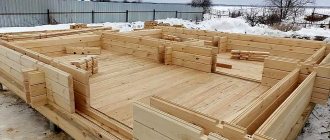0
6473
08.03.2014
How to heat a greenhouse - you ask? Before we talk about the technology of building a potbelly stove for heating a greenhouse, let's remember how pleasant it is to spend a weekend or even a whole summer at the dacha. Especially if there is a heated house and a greenhouse on the site, which is built according to all the rules and brings a rich harvest. And thanks to the stoves, neither sudden frosts nor nighttime drops in temperature are scary. Of course, speaking about heat, we immediately advise you to read about: the construction of a bubafonya furnace, as well as a furnace for mining.
Do-it-yourself potbelly stove for a summer residence
Subtleties of stove heating in a greenhouse
Most gardeners use a stove to heat their greenhouse in the spring and late fall. Winter heating is most often not cost-effective. The presence of a vestibule, ventilation and gas outlet in the greenhouse helps to increase the efficiency of the stove and at the same time reduce fuel costs.
The working principle of any model is as follows:
- Cold air from the street enters the room through a pipe in the upper part equipped with a damper.
- Fuel is stored in the lower compartment. But oxygen access to it is limited, so combustion occurs slowly. The fuel does not burn, but rather smolders. The intensity of the process is ensured by proper adjustment of the damper.
Thus, a minimal amount of fuel ensures long-term, gradual heat transfer.
When installing the stove, it is important to consider the following points:
- The primary task in a greenhouse is to warm the soil, not the air. Therefore, the stove must be located closer to the ground.
- Another option is to raise the beds by 30–40 cm or install boxes with seedlings on shelves.
Connecting a water circuit to the furnace will additionally provide heating of water for watering plants.
Option #3. Making a sawdust stove is profitable!
If you have your own workshop, such a stove is a real find! And greenhouse plants will grow in warmth, and there will be somewhere to put all the waste from what you love. It is also good if there is a wood processing plant near you.
Sawdust is an excellent fuel: it burns well and for a long time, it is environmentally friendly and cheap. They can be easily obtained or purchased pressed into briquettes and pellets. For heating greenhouses, this is an excellent raw material that is not at all demanding on the design of the stove, which is why it is easy to make one with your own hands from what you have. Often such potbelly stoves are assembled from pipes, steel barrels and waste gas cylinders. It’s the last option that we’ll tell you about now.
Here are instructions on how to make a stove from an old gas cylinder. Why from him? To put fuel into it, you no longer need a conical pipe, and cleaning such a stove from combustion products is much more convenient.
So, we take a gas cylinder with 5 mm walls, a grinder with cutting/cleaning wheels, a welding machine, sheet steel, metal fittings, studs and pipes for the chimney. Operating procedure:
- Step 1. Prepare the metal pipe. We cut off the top from the cylinder - we will later make a lid from it.
- Step 2. In the upper part we cut a hole with a diameter of 10 cm, where we will mount the pipe, and in the lower part - with a diameter of 5 cm. We also attach a pipe with drilled perforations here. We seal the top hermetically.
- Step 3. We weld the pipe onto the wall of the fuel tank - this is the future chimney.
- Step 4. Make a lid from the upper remaining part of the cylinder, securing its edges.
To make it easier to clean the stove from ash, you can weld two studs to the outer sides of the stove and make a base.
Types of furnaces
Having a set of materials and a little experience, you can build a stove with your own hands. But if you don’t want to burden yourself with extra work, it’s worth purchasing a ready-made model. To make the right choice, you first need to study the characteristics of different models, their pros and cons.
Vologda
Model with high heat transfer rates. Requires adding fuel only 2 times a day. Furnace efficiency is up to 80%. The principle of operation resembles the combustion of a gas generator. The coolant is supplied through flexible hoses connected to the rear wall of the boiler and the fuel tank.
The model is rarely used in private greenhouses, although its installation is advisable for large areas. The shape of “Vologda” is a large barrel located horizontally.
Release tubes are welded to it. There are several oven options. The smallest one passes 5 cubic meters of air per minute through the tubes.
Disadvantages of the model:
- there is no possibility of adjusting the temperature;
- bulky and inconvenient to install;
- requires systematic monitoring during combustion.
- high price.
Expert opinion
Borodin Vasily Platonovich
Stove mason, specialist in fireplaces, stoves and heating systems
Using hardwood as fuel helps maximize the burning time in the Vologda stove.
Butakov stove
This model received its name from the name of the designer. Currently, several domestic factories are engaged in its production.
The line of manufactured models consists of several types designed for heating rooms of different sizes:
- High school student;
- Student;
- Engineer;
- Assistant professor;
- Professor.
For small greenhouses, the smallest option is recommended - “Gymnasium student”.
Structurally, the Butakov furnace is a fuel tank with 3 mm thick steel walls and 2 types of pipes that are heated along the entire length:
- The lateral ones are curved and crossed with each other at the top.
- The front and rear are convection, supplemented with special afterburner jets for supplying secondary air to the chamber.
The design improves the heat transfer process in the firebox, which helps to increase efficiency. The oven can be used in normal mode and in gas generation mode. In order for the Butakov stove to start operating in long-burning mode, it is necessary to completely close the ash pan and close the damper by 2/3. Then it will not be the wood itself that will burn, but the gas it produces.
The oven can operate for up to 12 hours. To do this, before starting to light the furnace, the combustion chamber is filled as much as possible with fuel, the damper is set to the desired position and the height of the chimney must correspond to the required standards for the given volume of the firebox.
Only wood or sawdust can be used in Professor Butakov’s stove. Coal cannot be used in this model, since its combustion temperature is not acceptable for the metal from which the body is made.
When purchasing a Butakov stove, it is important to carefully consider the proposed model. Not all manufacturers integrate secondary combustion chambers into them, which reduces efficiency and requires frequent addition of firewood during use.
Buleryan (Breneran)
The German or American-made Buleryan stove and its Russian analogue Breneran are a gas generator with two combustion chambers:
- lower – gasification;
- top – burning.
On the front side of the stove there is a door for loading fuel and a gate for adjusting power. On the back side of the firebox there is a combustion pipe. A chimney is connected to it.
There are pipes mounted on the top and bottom of the firebox for cold air intake and hot air exhaust. The oven operates economically due to the pyrolysis process. The air in the greenhouse is heated not by heat transfer from the fuel, but by the gas released by it during combustion.
Expert opinion
Borodin Vasily Platonovich
Stove mason, specialist in fireplaces, stoves and heating systems
Fuel burns up to 10 hours from 1 load. Therefore, 2 loads in the morning and evening ensure that the temperature in the greenhouse is maintained around the clock.
Potbelly stove
The simplest design for heating greenhouses. Its structure is elementary. The barrel-shaped firebox is equipped with a door, a chimney, a pipe for the exit of warm air and a jumper in the upper third of the tank for storing fuel.
Heating of the room occurs due to the following:
- Movement of hot smoke through a pipe laid in the central part of the greenhouse or along its sides.
- Radiation of heat from furnace surfaces.
- Hot air formed above the jumper and exiting from a special pipe.
A potbelly stove can operate on waste lumber, firewood, and coal. The intensity of combustion depends on the nature of the fuel and the access of air to the firebox.
It is worth choosing this heating method only when it is possible to constantly monitor combustion. The need to systematically add fuel is a significant disadvantage of the Potbelly stove.
Bubafonya - improved Potbelly stove
The model was named after its creator, Afanasy Bubyakin. The design refers to long-burning stoves. The design consists of a fuel tank divided into parts by a pressure circle - a piston. It relies on the fuel stored inside. As a result, fuel combustion occurs in the lower part, and pyrolysis gases occur in the upper part. Oxygen is supplied inside through a pipe, which simultaneously serves as the piston handle.
The stove can use any fuel, including household and garden waste. The advantages of the model are simplicity of design, efficiency and the ability to operate without supervision. However, Bubafoni has a significant drawback - a small range of action. To solve the problem, the design must be supplemented with a fan.
Slobozhanka
Externally, this stove resembles a Potbelly stove, but supplemented with a gas generator and a heater. The efficiency of the furnace is increased by using combustible gases. They are not vented outside, but act as an additional source of heat.
Fuel is loaded into the combustion chamber from above. The entire process of heat generation occurs in a downward direction.
Based on the specific design of the Slobozhanka, there are three ways to supply air - through:
- Pipe opening from top to bottom with L-shaped feeding.
- A pipe located in the center of the device. The air in this design comes from below.
- The side pipe located at the very bottom of the furnace.
The Slobozhanka body has a barrel shape, inside of which there are seven vertical pipes. The models include:
- lack of a tray for removing unburned residues;
- the need for regular fuel supply.
Method No. 3: oven for a greenhouse made from two metal barrels
The third method allows you to make a sawdust stove. Creation is simple. To complete the task you need:
- two standard metal barrels;
- steel pipe for chimney;
- Reinforcement or metal corners are used as legs.
Externally, it is a simple container with a closing lid. A metal partition is created inside. The lower part of the structure is equipped with legs and a door. The upper part of the product is connected to the chimney.
Step-by-step instruction:
- You need to cut out the top of the first barrel. A chimney pipe is installed in it.
- At the bottom of the barrel you need to make a hole Ø10 cm.
- The second barrel is cut exactly in half.
- A hole is created in one part where the door will be.
- The legs are welded to it.
- The stove is connected by welding to the chimney pipe and the firebox.
- The lid is made from the material that remains from 2 barrels.
A sawdust stove for a greenhouse with your own hands is ready. Its functionality is checked. A metal cone is made to load the furnace. Its upper part should be 15 cm. The cone is installed inside before the sawdust is laid. When the fuel is filled in, the cone is removed. The result is a hole into which wood chips are poured and ignited.
To make a stove you need two standard barrels and a chimney pipe
How to choose fuel
Long-burning furnaces operate on almost all types of fuel: coal, wood, sawdust, waste.
The choice depends on the parameters of the greenhouse:
- Sawdust is an affordable type of fuel for summer residents who have a sawmill next to their property. Most often they can be taken for free, since workers simply collect and throw away these wastes.
- Firewood is the best choice for a greenhouse stove. In a small greenhouse, fuel can be added once a day. Firewood is affordable and environmentally friendly.
- Coal . The main advantage of this type of fuel is its high calorie content. Disadvantages: release of toxic substances, as well as a large amount of waste. Some types of coal can be dangerous if stored improperly because they are prone to spontaneous combustion.
- Briquettes . This type of fuel combines the advantages of wood and coal. Briquettes are characterized by rapid combustion and maintain long-lasting combustion. The fuel is highly efficient, economical and has no harmful emissions.
Stove selection criteria
The most affordable option for heating a greenhouse is a potbelly stove. This design has a low price and is easy to operate. However, the Potbelly stove is not without its drawbacks. It should not be left unattended, as fuel must be constantly added to maintain combustion. In addition, the air from such a stove heats up unevenly.
To minimize labor costs and at the same time obtain high-quality, systematic heating of the greenhouse, it is better to opt for one of the models of long-burning stoves. The cost of such units is an order of magnitude higher, but the efficiency is also several times higher than that of a potbelly stove.
When selecting a model, it is important to consider:
- greenhouse area;
- available type of fuel.
If the greenhouse is small and heating is provided only in case of a sudden cold snap, it is not advisable to buy a serious long-burning stove. In this case, you can get by with a budget stove.
For medium-sized greenhouses intended for early planting, the best option is Vologda or Bubafonya. They are able to maintain the desired temperature without additional fuel supply for 10-12 hours in a row, but at the same time they have an acceptable cost.
For large greenhouses, it is preferable to purchase Buleryan, Slobozhanka or Butakov stoves. These models are usually expensive, but are characterized by increased efficiency. Plus, manufacturers offer a wide selection of oven sizes designed for rooms of various sizes, which is economically beneficial for owners of industrial greenhouses.
Expert opinion
Borodin Vasily Platonovich
Stove mason, specialist in fireplaces, stoves and heating systems
To increase the efficiency of a stove, even if it is not very large, you can lay the chimney horizontally, running it through the entire length of the greenhouse. Gardeners resort to a similar trick if the size of the greenhouse is large for a small stove, but clearly smaller than industrial options.
Stove with horizontal chimney
Usually the chimney is laid along the walls or at a height above human height for safety reasons - to avoid burns. In this case, the heat is distributed more evenly throughout the room, but at the same time the likelihood of fire increases, since soot and creosote accumulate in the pipe. According to fire safety requirements, the chimney must be cleaned regularly, which is difficult to do if it is laid horizontally.
To increase the efficiency of heating a greenhouse with your own hands and at the same time reduce the fire hazard, you can place the stove in a deep pit and lay a chimney under a layer of earth. This method will also allow heating not only the air, but also the soil.
Questions about the operation of furnaces
How to increase the burning time of wood in a potbelly stove?
Maximum reduction in air supply helps increase the rate of fuel burnout. You also need to stack the firewood very close to each other, and not stir the coal so that it smolderes slowly and does not burn with a bright flame. A clever technique for preserving heat is to place a bucket of sand on the stove.
When the Buleryan stove burns, smoke is released from the pipes. What is the reason and how to fix it?
The pipes of this furnace located in the front part of the firebox are supplemented with special injectors for afterburning the resulting gases. If they do not burn out, it means that the chimney is not working correctly. It is too low or clogged. Do not reduce the diameter of the chimney. It is different for each oven size. For the smallest Buleryan the diameter should not be less than 120 mm, and for the largest one - at least 180 mm.
Choosing the right stove for a greenhouse is a guarantee of obtaining rich harvests with minimal fuel costs.
Organization of a soil heating system
To build a polycarbonate greenhouse oven with your own hands, you can use available materials - silicate brick or any other brick that can withstand similar temperature loads. But, as experience shows, it is best to use metal welded structures - purchased, made personally, or custom-made from a specialist.
How to save: You can use a good-quality barrel made of high-quality metal as the basis for a metal stove.
Choosing a location.
As mentioned earlier, it is best to place the heating element in the center of the polymer structure (or closer to the center) - this will help minimize temperature changes near the wall. In addition, the heat from the stove itself will heat the surrounding air and “give” an additional source of thermal energy. But you should know that planting plants in close proximity to this element is strictly prohibited, as is placing flammable liquids or other objects. So, to store firewood, diesel fuel or processed oil, it is necessary to organize a separate storage place - away from the strong heat of the stove. For greater convenience, you can fence the oven around the perimeter (at least 30 cm) with unnecessary bricks or large stones (not boards!).
Chimney.
To use hot air, it is better to place the outlet pipe not in a circle - near the walls of the greenhouse, but lay it in a “snake” between the rows - 3-4 “loops” will be enough. Moreover, it is important not to forget about the horizontal chimney - it may be needed for emergency cooling of the room in case of severe overheating. In such situations, the horizontal chimney should be closed, and the vertical chimney, on the contrary, should be opened, thus, the heated mixture of combustion products will be removed directly outside the building. This method is also used for forced or planned cleaning of the inside of pipes.
Note: since cleaning a horizontal chimney should be carried out periodically to prevent clogging, and this is not so easy to do, small manholes - medium-diameter hatches - need to be organized along the entire perimeter of the pipes. But when doing such work, it is worth remembering the dangers of carbon monoxide and carefully sealing these holes.
In addition to everything said above, the chimney should not be placed on the surface of the soil, although this option is acceptable, but in a buried state - this will ensure almost complete absorption of heat by the soil, and, therefore, reduce losses to a minimum.
Fuel selection.
If a summer resident wants to make his stove for a polymer greenhouse more universal, then choosing any particular type of fuel is out of the question. To maximize cost savings, the internal part - the firebox - should be equipped in such a way that it works on both liquid and solid fuels (make a kind of vessel). This will help the owner to use pre-prepared firewood (coal), recycled engine oil, and diesel fuel.
And finally, you can note that you should not rely on any one method of heating a polycarbonate greenhouse. That is, you should protect yourself and the future harvest as much as possible - stock up on both good stove heating and a standard electric heating element (this will help with periodic cleaning and repairs of the stove).
If you are planning to build a polycarbonate greenhouse yourself, then in this article you will learn all the nuances of creating a high-quality structure.To have a bountiful harvest at any time of the year, you will need a polycarbonate greenhouse with your own hands; if you follow our advice, the construction process will not take much time.










